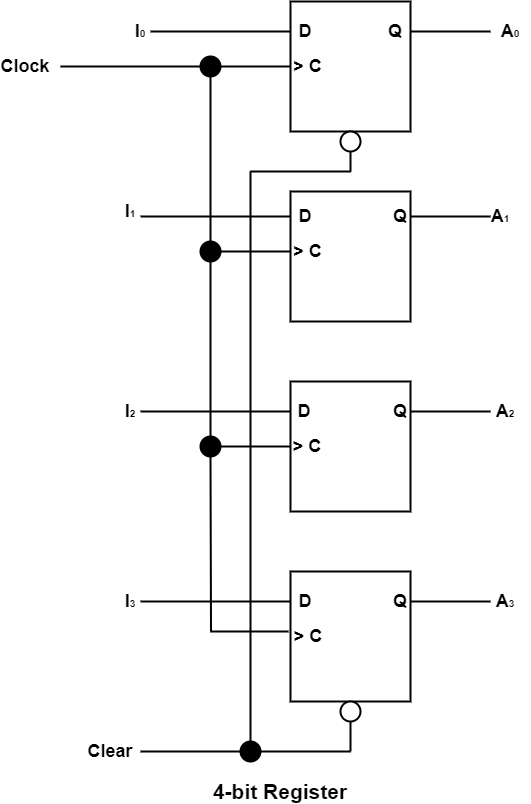
 Data Structure
Data Structure Networking
Networking RDBMS
RDBMS Operating System
Operating System Java
Java MS Excel
MS Excel iOS
iOS HTML
HTML CSS
CSS Android
Android Python
Python C Programming
C Programming C++
C++ C#
C# MongoDB
MongoDB MySQL
MySQL Javascript
Javascript PHP
PHP
- Selected Reading
- UPSC IAS Exams Notes
- Developer's Best Practices
- Questions and Answers
- Effective Resume Writing
- HR Interview Questions
- Computer Glossary
- Who is Who
What are Registers?
A register is a set of flip-flops with each flip-flop adequate for saving one bit of data. An n-bit register has a set of n flip-flops and is adequate for saving any binary data of n bits. In the flip-flops, a register can have combinational gates that implement specific data-processing operations.
A register includes a set of flip-flops and gates that influence their change. The flip-flops manage the binary data and the gates control when and how current data is moved into the register.
There are multiple kinds of registers that are accessible economically. The elementary register includes just flip-flops, with no outside gates.
The diagram demonstrates such a register generated with four D flip-flops. The general clock input triggers all flip-flops on the increasing edge of each pulse, and the binary information accessible at the four inputs is changed into the 4-bit register.

The four outputs can be tested whenever to acquire the binary data saved in the register. The clear input goes to an exceptional terminal in each flip-flop. When this input goes to 0, all flip-flops are reset non-concurrently.
The clear input is beneficial for clearing the register to all O's since it’s clocked function. The clear input should be provided at logic 1 during normal clocked operation. The clock signal allows the D input but that the clear input is autonomous of the clock.
The exchange of new data into a register is defined as stacking the register. If all the bits of the register are stacked at the same time with a general clock pulse transition, we say that the stacking is completed in parallel. A clock transition used to the C inputs of the register of the diagram demonstrates will load all four inputs I0 through I3 in parallel. In this arrangement, the clock should be repressed from the circuit if the substance of the register should be left unaltered.

